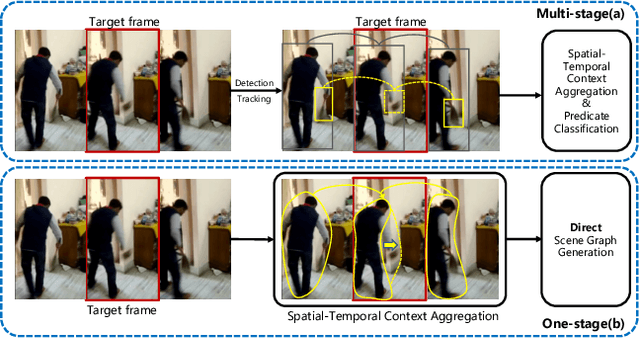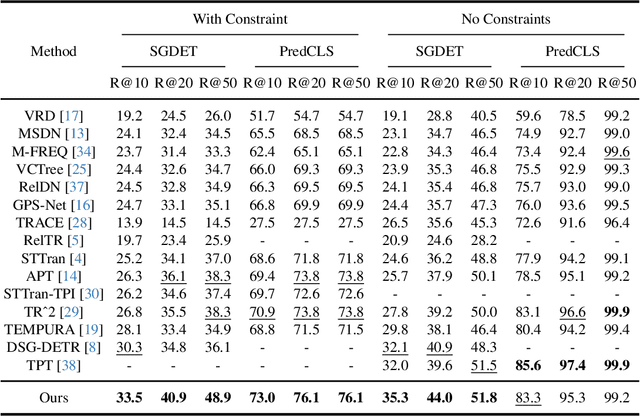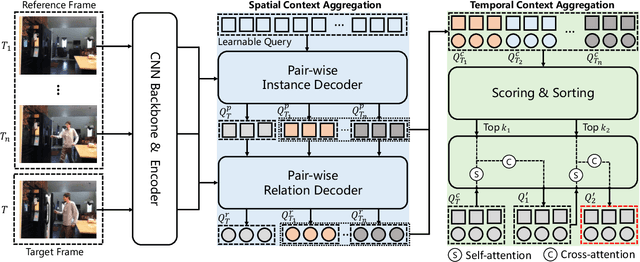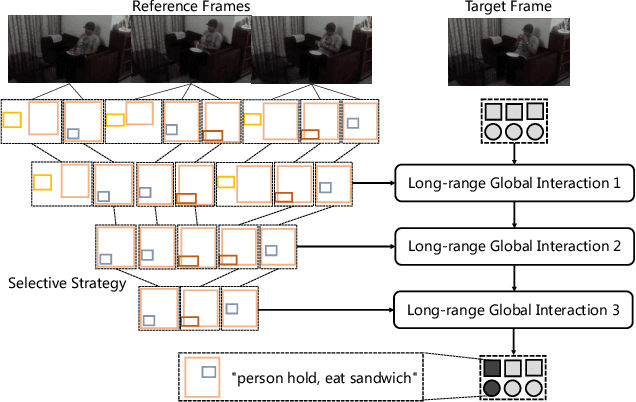Zhimin Li
An Evaluation-Centric Paradigm for Scientific Visualization Agents
Sep 18, 2025Abstract:Recent advances in multi-modal large language models (MLLMs) have enabled increasingly sophisticated autonomous visualization agents capable of translating user intentions into data visualizations. However, measuring progress and comparing different agents remains challenging, particularly in scientific visualization (SciVis), due to the absence of comprehensive, large-scale benchmarks for evaluating real-world capabilities. This position paper examines the various types of evaluation required for SciVis agents, outlines the associated challenges, provides a simple proof-of-concept evaluation example, and discusses how evaluation benchmarks can facilitate agent self-improvement. We advocate for a broader collaboration to develop a SciVis agentic evaluation benchmark that would not only assess existing capabilities but also drive innovation and stimulate future development in the field.
Directly Aligning the Full Diffusion Trajectory with Fine-Grained Human Preference
Sep 09, 2025Abstract:Recent studies have demonstrated the effectiveness of directly aligning diffusion models with human preferences using differentiable reward. However, they exhibit two primary challenges: (1) they rely on multistep denoising with gradient computation for reward scoring, which is computationally expensive, thus restricting optimization to only a few diffusion steps; (2) they often need continuous offline adaptation of reward models in order to achieve desired aesthetic quality, such as photorealism or precise lighting effects. To address the limitation of multistep denoising, we propose Direct-Align, a method that predefines a noise prior to effectively recover original images from any time steps via interpolation, leveraging the equation that diffusion states are interpolations between noise and target images, which effectively avoids over-optimization in late timesteps. Furthermore, we introduce Semantic Relative Preference Optimization (SRPO), in which rewards are formulated as text-conditioned signals. This approach enables online adjustment of rewards in response to positive and negative prompt augmentation, thereby reducing the reliance on offline reward fine-tuning. By fine-tuning the FLUX model with optimized denoising and online reward adjustment, we improve its human-evaluated realism and aesthetic quality by over 3x.
Pref-GRPO: Pairwise Preference Reward-based GRPO for Stable Text-to-Image Reinforcement Learning
Aug 28, 2025Abstract:Recent advancements highlight the importance of GRPO-based reinforcement learning methods and benchmarking in enhancing text-to-image (T2I) generation. However, current methods using pointwise reward models (RM) for scoring generated images are susceptible to reward hacking. We reveal that this happens when minimal score differences between images are amplified after normalization, creating illusory advantages that drive the model to over-optimize for trivial gains, ultimately destabilizing the image generation process. To address this, we propose Pref-GRPO, a pairwise preference reward-based GRPO method that shifts the optimization objective from score maximization to preference fitting, ensuring more stable training. In Pref-GRPO, images are pairwise compared within each group using preference RM, and the win rate is used as the reward signal. Extensive experiments demonstrate that PREF-GRPO differentiates subtle image quality differences, providing more stable advantages and mitigating reward hacking. Additionally, existing T2I benchmarks are limited by coarse evaluation criteria, hindering comprehensive model assessment. To solve this, we introduce UniGenBench, a unified T2I benchmark comprising 600 prompts across 5 main themes and 20 subthemes. It evaluates semantic consistency through 10 primary and 27 sub-criteria, leveraging MLLM for benchmark construction and evaluation. Our benchmarks uncover the strengths and weaknesses of both open and closed-source T2I models and validate the effectiveness of Pref-GRPO.
TRKT: Weakly Supervised Dynamic Scene Graph Generation with Temporal-enhanced Relation-aware Knowledge Transferring
Aug 07, 2025Abstract:Dynamic Scene Graph Generation (DSGG) aims to create a scene graph for each video frame by detecting objects and predicting their relationships. Weakly Supervised DSGG (WS-DSGG) reduces annotation workload by using an unlocalized scene graph from a single frame per video for training. Existing WS-DSGG methods depend on an off-the-shelf external object detector to generate pseudo labels for subsequent DSGG training. However, detectors trained on static, object-centric images struggle in dynamic, relation-aware scenarios required for DSGG, leading to inaccurate localization and low-confidence proposals. To address the challenges posed by external object detectors in WS-DSGG, we propose a Temporal-enhanced Relation-aware Knowledge Transferring (TRKT) method, which leverages knowledge to enhance detection in relation-aware dynamic scenarios. TRKT is built on two key components:(1)Relation-aware knowledge mining: we first employ object and relation class decoders that generate category-specific attention maps to highlight both object regions and interactive areas. Then we propose an Inter-frame Attention Augmentation strategy that exploits optical flow for neighboring frames to enhance the attention maps, making them motion-aware and robust to motion blur. This step yields relation- and motion-aware knowledge mining for WS-DSGG. (2) we introduce a Dual-stream Fusion Module that integrates category-specific attention maps into external detections to refine object localization and boost confidence scores for object proposals. Extensive experiments demonstrate that TRKT achieves state-of-the-art performance on Action Genome dataset. Our code is avaliable at https://github.com/XZPKU/TRKT.git.
Hunyuan-Game: Industrial-grade Intelligent Game Creation Model
May 20, 2025Abstract:Intelligent game creation represents a transformative advancement in game development, utilizing generative artificial intelligence to dynamically generate and enhance game content. Despite notable progress in generative models, the comprehensive synthesis of high-quality game assets, including both images and videos, remains a challenging frontier. To create high-fidelity game content that simultaneously aligns with player preferences and significantly boosts designer efficiency, we present Hunyuan-Game, an innovative project designed to revolutionize intelligent game production. Hunyuan-Game encompasses two primary branches: image generation and video generation. The image generation component is built upon a vast dataset comprising billions of game images, leading to the development of a group of customized image generation models tailored for game scenarios: (1) General Text-to-Image Generation. (2) Game Visual Effects Generation, involving text-to-effect and reference image-based game visual effect generation. (3) Transparent Image Generation for characters, scenes, and game visual effects. (4) Game Character Generation based on sketches, black-and-white images, and white models. The video generation component is built upon a comprehensive dataset of millions of game and anime videos, leading to the development of five core algorithmic models, each targeting critical pain points in game development and having robust adaptation to diverse game video scenarios: (1) Image-to-Video Generation. (2) 360 A/T Pose Avatar Video Synthesis. (3) Dynamic Illustration Generation. (4) Generative Video Super-Resolution. (5) Interactive Game Video Generation. These image and video generation models not only exhibit high-level aesthetic expression but also deeply integrate domain-specific knowledge, establishing a systematic understanding of diverse game and anime art styles.
Unified Multimodal Chain-of-Thought Reward Model through Reinforcement Fine-Tuning
May 06, 2025Abstract:Recent advances in multimodal Reward Models (RMs) have shown significant promise in delivering reward signals to align vision models with human preferences. However, current RMs are generally restricted to providing direct responses or engaging in shallow reasoning processes with limited depth, often leading to inaccurate reward signals. We posit that incorporating explicit long chains of thought (CoT) into the reward reasoning process can significantly strengthen their reliability and robustness. Furthermore, we believe that once RMs internalize CoT reasoning, their direct response accuracy can also be improved through implicit reasoning capabilities. To this end, this paper proposes UnifiedReward-Think, the first unified multimodal CoT-based reward model, capable of multi-dimensional, step-by-step long-chain reasoning for both visual understanding and generation reward tasks. Specifically, we adopt an exploration-driven reinforcement fine-tuning approach to elicit and incentivize the model's latent complex reasoning ability: (1) We first use a small amount of image generation preference data to distill the reasoning process of GPT-4o, which is then used for the model's cold start to learn the format and structure of CoT reasoning. (2) Subsequently, by leveraging the model's prior knowledge and generalization capabilities, we prepare large-scale unified multimodal preference data to elicit the model's reasoning process across various vision tasks. During this phase, correct reasoning outputs are retained for rejection sampling to refine the model (3) while incorrect predicted samples are finally used for Group Relative Policy Optimization (GRPO) based reinforcement fine-tuning, enabling the model to explore diverse reasoning paths and optimize for correct and robust solutions. Extensive experiments across various vision reward tasks demonstrate the superiority of our model.
See or Recall: A Sanity Check for the Role of Vision in Solving Visualization Question Answer Tasks with Multimodal LLMs
Apr 14, 2025Abstract:Recent developments in multimodal large language models (MLLM) have equipped language models to reason about vision and language jointly. This permits MLLMs to both perceive and answer questions about data visualization across a variety of designs and tasks. Applying MLLMs to a broad range of visualization tasks requires us to properly evaluate their capabilities, and the most common way to conduct evaluation is through measuring a model's visualization reasoning capability, analogous to how we would evaluate human understanding of visualizations (e.g., visualization literacy). However, we found that in the context of visualization question answering (VisQA), how an MLLM perceives and reasons about visualizations can be fundamentally different from how humans approach the same problem. During the evaluation, even without visualization, the model could correctly answer a substantial portion of the visualization test questions, regardless of whether any selection options were provided. We hypothesize that the vast amount of knowledge encoded in the language model permits factual recall that supersedes the need to seek information from the visual signal. It raises concerns that the current VisQA evaluation may not fully capture the models' visualization reasoning capabilities. To address this, we propose a comprehensive sanity check framework that integrates a rule-based decision tree and a sanity check table to disentangle the effects of "seeing" (visual processing) and "recall" (reliance on prior knowledge). This validates VisQA datasets for evaluation, highlighting where models are truly "seeing", positively or negatively affected by the factual recall, or relying on inductive biases for question answering. Our study underscores the need for careful consideration in designing future visualization understanding studies when utilizing MLLMs.
Digital Avatars: Framework Development and Their Evaluation
Aug 07, 2024


Abstract:We present a novel prompting strategy for artificial intelligence driven digital avatars. To better quantify how our prompting strategy affects anthropomorphic features like humor, authenticity, and favorability we present Crowd Vote - an adaptation of Crowd Score that allows for judges to elect a large language model (LLM) candidate over competitors answering the same or similar prompts. To visualize the responses of our LLM, and the effectiveness of our prompting strategy we propose an end-to-end framework for creating high-fidelity artificial intelligence (AI) driven digital avatars. This pipeline effectively captures an individual's essence for interaction and our streaming algorithm delivers a high-quality digital avatar with real-time audio-video streaming from server to mobile device. Both our visualization tool, and our Crowd Vote metrics demonstrate our AI driven digital avatars have state-of-the-art humor, authenticity, and favorability outperforming all competitors and baselines. In the case of our Donald Trump and Joe Biden avatars, their authenticity and favorability are rated higher than even their real-world equivalents.
* This work was presented during the IJCAI 2024 conference proceedings for demonstrations
OED: Towards One-stage End-to-End Dynamic Scene Graph Generation
May 27, 2024



Abstract:Dynamic Scene Graph Generation (DSGG) focuses on identifying visual relationships within the spatial-temporal domain of videos. Conventional approaches often employ multi-stage pipelines, which typically consist of object detection, temporal association, and multi-relation classification. However, these methods exhibit inherent limitations due to the separation of multiple stages, and independent optimization of these sub-problems may yield sub-optimal solutions. To remedy these limitations, we propose a one-stage end-to-end framework, termed OED, which streamlines the DSGG pipeline. This framework reformulates the task as a set prediction problem and leverages pair-wise features to represent each subject-object pair within the scene graph. Moreover, another challenge of DSGG is capturing temporal dependencies, we introduce a Progressively Refined Module (PRM) for aggregating temporal context without the constraints of additional trackers or handcrafted trajectories, enabling end-to-end optimization of the network. Extensive experiments conducted on the Action Genome benchmark demonstrate the effectiveness of our design. The code and models are available at \url{https://github.com/guanw-pku/OED}.
Hunyuan-DiT: A Powerful Multi-Resolution Diffusion Transformer with Fine-Grained Chinese Understanding
May 14, 2024



Abstract:We present Hunyuan-DiT, a text-to-image diffusion transformer with fine-grained understanding of both English and Chinese. To construct Hunyuan-DiT, we carefully design the transformer structure, text encoder, and positional encoding. We also build from scratch a whole data pipeline to update and evaluate data for iterative model optimization. For fine-grained language understanding, we train a Multimodal Large Language Model to refine the captions of the images. Finally, Hunyuan-DiT can perform multi-turn multimodal dialogue with users, generating and refining images according to the context. Through our holistic human evaluation protocol with more than 50 professional human evaluators, Hunyuan-DiT sets a new state-of-the-art in Chinese-to-image generation compared with other open-source models. Code and pretrained models are publicly available at github.com/Tencent/HunyuanDiT
 Add to Chrome
Add to Chrome Add to Firefox
Add to Firefox Add to Edge
Add to Edge